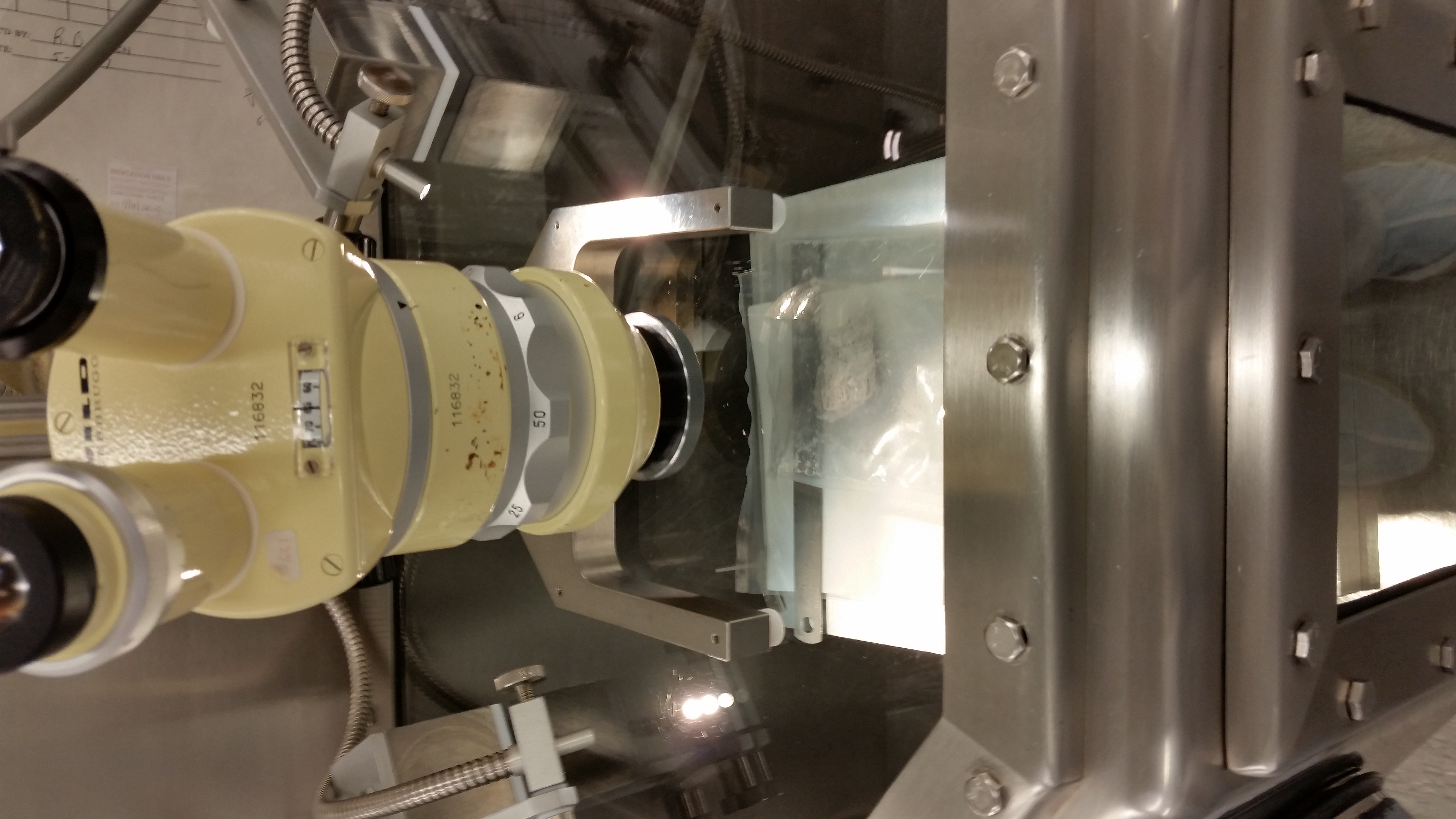Genesis Rock on:
[Wikipedia]
[Google]
[Amazon]
 The Genesis Rock (sample 15415) is a sample of Moon rock retrieved by Apollo 15 astronauts
The Genesis Rock (sample 15415) is a sample of Moon rock retrieved by Apollo 15 astronauts
Summary
/ref>
Lunar and Planetary Institute - Apollo 15
(From the ''Apollo Lunar Surface Journal'', scroll down to 145:41:48.) *Astronaut Scott examines the Genesis rock.
image
* A
overview
of the samples collected by Apollo 15. (The Genesis Rock is sample #15415 and is described but not listed by its number.) {{Apollo program, state=collapsed Lunar science Igneous rocks Apollo 15 Lunar samples David Scott James Irwin Pre-Nectarian
 The Genesis Rock (sample 15415) is a sample of Moon rock retrieved by Apollo 15 astronauts
The Genesis Rock (sample 15415) is a sample of Moon rock retrieved by Apollo 15 astronauts James Irwin
James Benson Irwin (March 17, 1930 – August 8, 1991) was an American astronaut, aeronautical engineer, test pilot, and a United States Air Force pilot. He served as Apollo Lunar Module pilot for Apollo 15, the fourth human lunar landi ...
and David Scott
David Randolph Scott (born June 6, 1932) is an American retired test pilot and NASA astronaut who was the seventh person to walk on the Moon. Selected as part of the third group of astronauts in 1963, Scott flew to space three times and ...
in 1971 during the second lunar EVA
Eva or EVA may refer to:
* Eva (name), a feminine given name
Arts, entertainment, and media Fictional characters
* Eva (Dynamite Entertainment), a comic book character by Dynamite Entertainment
* Eva (''Devil May Cry''), Dante's mother in t ...
, at Spur crater. With a mass of , it is currently stored at the Lunar Sample Laboratory Facility
The Lunar Sample Laboratory Facility (LSLF) is a repository and laboratory facility at NASA's Lyndon B. Johnson Space Center in Houston, Texas, opened in 1979 to house geologic samples returned from the Moon by the Apollo program missions to ...
in Houston, Texas.
Rock
Chemical analysis of the Genesis Rock indicated it is ananorthosite
Anorthosite () is a phaneritic, intrusive igneous rock characterized by its composition: mostly plagioclase feldspar (90–100%), with a minimal mafic component (0–10%). Pyroxene, ilmenite, magnetite, and olivine are the mafic minerals most ...
, composed mostly of a type of plagioclase
Plagioclase is a series of tectosilicate (framework silicate) minerals within the feldspar group. Rather than referring to a particular mineral with a specific chemical composition, plagioclase is a continuous solid solution series, more pro ...
feldspar
Feldspars are a group of rock-forming aluminium tectosilicate minerals, also containing other cations such as sodium, calcium, potassium, or barium. The most common members of the feldspar group are the ''plagioclase'' (sodium-calcium) felds ...
known as anorthite. The rock was formed in the early stages of the Solar System
The Solar System Capitalization of the name varies. The International Astronomical Union, the authoritative body regarding astronomical nomenclature, specifies capitalizing the names of all individual astronomical objects but uses mixed "Solar ...
, at least 4 billion years ago.
It was originally thought they had found a piece of the Moon's primordial crust, but later analysis initially showed that the rock was only 4.1 ± 0.1 billion years old, which is younger than the Moon itself, and was formed after the Moon's crust solidified. It is still an extremely old sample, formed during the Pre-Nectarian
The pre-Nectarian period of the lunar geologic timescale runs from 4.533 billion years ago (the time of the initial formation of the Moon) to 3.920 billion years ago, when the Nectaris Basin was formed by a large impact. It is followed by the Necta ...
period
Period may refer to:
Common uses
* Era, a length or span of time
* Full stop (or period), a punctuation mark
Arts, entertainment, and media
* Period (music), a concept in musical composition
* Periodic sentence (or rhetorical period), a concept ...
of the Moon's history. Dating of pyroxenes from other lunar anorthosite samples gave a samarium–neodymium age of crystallization of 4.46 billion years.Norman, M. D., Borg, L. E., Nyquist, L. E., and Bogard, D. D. (2003) ''Chronology, geochemistry, and petrology of a ferroan noritic anorthosite clast from Descartes breccia 67215: Clues to the age, origin, structure, and impact history of the lunar crust,'' Meteoritics and Planetary Science, vol 38, p. 645-66Summary
/ref>
See also
* Apollo 15 operations on the Lunar surface *Hadley–Apennine
Hadley–Apennine is a region on the near side of Earth's Moon that served as the landing site for the American Apollo 15 mission, the fourth manned landing on the Moon and the first of the " J-missions", in July 1971. The site is located on the ...
* Lunar sample displays
The Lunar sample displays are two commemorative plaques consisting of small fragments of Moon specimen brought back with the Apollo 11 and Apollo 17 lunar missions. The plaques and Moon rocks were given as goodwill gifts in 1970 and 1973 to the ...
* Stolen and missing Moon rocks
References
External links
Lunar and Planetary Institute - Apollo 15
(From the ''Apollo Lunar Surface Journal'', scroll down to 145:41:48.) *Astronaut Scott examines the Genesis rock.
image
* A
overview
of the samples collected by Apollo 15. (The Genesis Rock is sample #15415 and is described but not listed by its number.) {{Apollo program, state=collapsed Lunar science Igneous rocks Apollo 15 Lunar samples David Scott James Irwin Pre-Nectarian